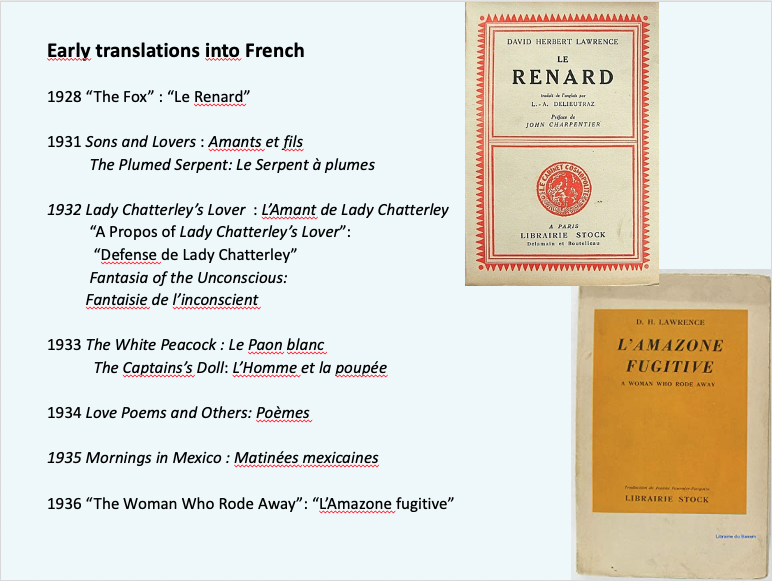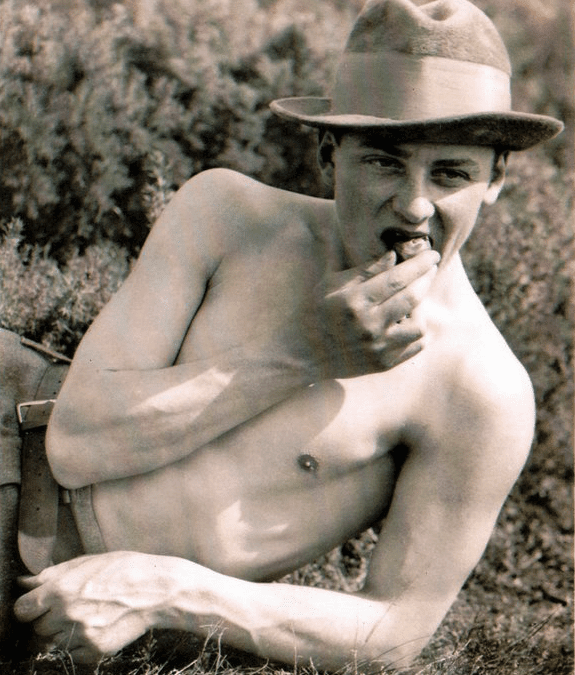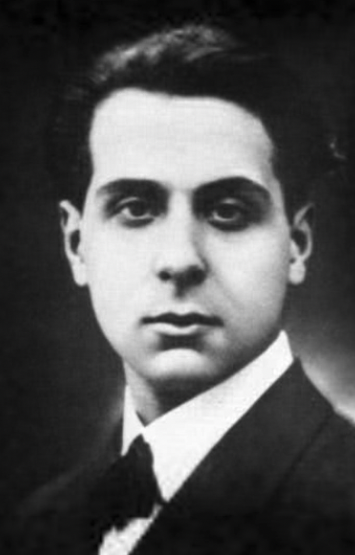Report of the Twenty-Seventh Meeting of the London D. H. Lawrence Group
Audra Belmore, Shirley Bricout, Annalise Grice, Julianne Newmark, Marina Ragachevskaya
Lawrence and Pedagogy: Teaching Lawrence in Universities Today

Thursday, 27th October 2022
By Zoom
18.30-20.00 UK time
ATTENDERS
36 people attended, including, outside of England, Marina Ragachevskaya in Minsk, Shirley Bricout in Vannes, Brittany, Audra Belmore and Julianne Newmark in Albequerque Uni of New Mexico, Fran et Bob, Antibes in France, Judith Ruderman in North Carolina, Kathleen Vella in Malta, Tina Ferris in Southern California, Bill Haller, Nicolas from Mexico City, Shanee Stepakoff in Connecticut New Haven, Kethic Cushman
INTRODUCTION
The intention of the meeting was to discover how Lawrence is being taught at university level across the world. The kind of questions to be considered included:
– what are the challenges in teaching Lawrence to university students today?
– is there any resistance from their institution, or students, to teaching Lawrence?
– on which texts do they tend to focus and why?
– what strategies do they use to teach these texts?
– what do they think are the benefits to students of studying Lawrence’s works?
The meeting was addressed by five contributors from four different countries: Shirley Bricout represented France, Marina Ragachevskaya represented Belarus, Julianne Newmark with her colleague Audra Belmore represented the United States, and Annalise Grice represented the UK. Each of them (with Julianne and Audra presenting together) presented in turn before the meeting turned to discussion.
THE PRESENTATIONS
SHIRLEY BRICOUT: FRANCE
Shirley has been teaching in high schools for 34 years, and has been researching Lawrence for 22. She began with an overview of Lawrence’s position in French society in general. To most French people, the title Lady Chatterley’s Loverrings a bell, although they will not necessarily be able to name the author nor know the fact that Lawrence came to Paris in 1929 to find a publisher because of the increasing numbers of pirated editions being released. Plaques now commemorate his visit to Paris, his stay in Bandol (Hotel Beaurivage, Villa Beau Soleil), and in Vence (the sanatorium Ad Astra, Villa Robermond where he died, and Vence cemetery).

Lawrence had travelled across France for the first time in November 1919 on his way to Italy, but did not stop. He first stayed in France in 1924, when he spent 20 days in and around Paris, and visited Versailles and Chartres. He came back to Paris where he spent a few days en route to Lausanne at the end of September 1926. While in Paris, Aldous Huxley had introduced Lawrence to some of the French authors of La Nouvelle Revue Française, including André Maurois and François Mauriac. The literary critic Gabriel Marcel wrote that he believed that Lawrence had been unfairly treated in France (only a couple of his poems had been published in French literary magazines). Although Marcel was overwhelmed by the beauty of the novel Lady Chatterley’s Lover, he doubted that he would agree to translate it unabridged.
Around 25 of Lawrence’s works have been translated into French. “The Fox” was translated during his lifetime in 1928, then there was a cluster of translations after his death (it is to be noted that Lady Chatterley’s Lover was never banned in France). Although many of these are out of print, it is easy to find them second-hand.

More recent translations include:

Within academia, the journal Etudes Lawrenciennes was founded in 1986 in Nanterre to promote Lawrencian studies in France. It is edited by Ginette Roy and is now online.
Lawrence’s works are on the curriculum for teachers’ competitive exams (the Agrégation), which an aspiring teacher can take if s/he has a Master’s degree.
The Lawrencian works included on the curriculum for the Agrégation have been:
1965 Sons and Lovers,
1979 Poems
1989, 2002-3 Women in Love three times
There are currently three PhD students preparing a dissertation on Lawrence in France, and there have been three others in the past five years.
Lawrence’s works are usually considered to be on the margins of modernism, and he is therefore somewhat marginal to university courses on modernism. Shirley also noted that Lawrence’s language presents challenges, especially to first years, who need to look up many of the words of The Rainbow. Lawrence’s short stories are often used to teach less advanced students, The Rocking Horse Winner and The Fox being the most often chosen, for their brisk narration and suspense. Sometimes role plays are used, with students acting out the parts of characters, or creative writing, or students rewriting a passage from a different point of view.
The latest high-school reform of 2010 brought Lawrence’s works onto the school curriculum also. 16-17 year-olds have a choice between Sons and Lovers and Jane Eyre as apprenticeship novels, and between Lady Chatterley’s Lover or The Catcher in the Rye with regard to censorship. Lawrence’s poem “A Snowy Day at School” can be compared withBlake’s “The School Boy”. Shirley finds that, although there are challenges to teaching Lawrence, it is essential to keep his works on the curriculum, because he introduced new viewpoints to literature on issues that remain relevant today.
MARINA RAGACHEVSKAYA: BELARUS
Marina has taught Lawrence at university level for 30 years. She started by giving an overview of Lawrence’s reception in Belarus since Soviet times. Foreign literary works for teaching had to be approved by government bodies such as the Central Committee of the Communist Party and the Ministry of Culture. Various aspects of Lawrence’s work, including his philosophy and psychology, would have attracted the damning label ‘bourgeois’, yet Goslitizdat (the State Literary Publishers) approved certain early translations because he was, according to the assessors, “a former coal-miner”. The Rainbow was therefore translated into Russian in 1925.

However, between 1929 and the late 1980s Lawrence’s works were neither translated nor published. Imported books were also closely scrutinized (though a few imported volumes of Lawrence nonetheless evaded this censorship and reached the library of Marina’s university in the 1950s and 60s). Nonetheless, references to him appear in the first Soviet textbooks on the history of foreign literature. In the 1948 and 1954 textbooks on the History of English Literature by A. Anikst, half a page is dedicated to Lawrence (who is described as a “reactionary” writer). The exiled Belarussian Soviet scholar Liudmila Cortes wrote her first book on English literature in 1974, which Marina’s university in Minsk then began to use. It claims that “The name of D.H. Lawrence (1885-1930) is worthy of attention. He was an admirer of Freud, too. At the same time, however, he stood very near to the realistic principles in Art. The son of a Midland miner, brought up in a working class environment, Lawrence, for the first time introduced in literature the working man in his everyday life, paying much attention to the depicting of his inner, private world. The working people in Lawrence’s novels are described as respectable, sensible, shrewd men”. Anikst considered more ‘socially important’ authors to include Katharine Mansfield and Richard Aldington.
N.P. Mikhalskaya, in her 1960s-70s articles, wrote much about Lawrence, but felt obliged to observe: “The scheme of human relations created by Lawrence which is repeated obsessively in each of his novels and claims to be the only reality in existence dims the truth of life and perverts the real meaning of human relations … Lawrence was walking the wrong path a priori… Like other modernists, Lawrence isolates his characters from life and releases himself from the need to analyse social conditions of their existence … he uses trumped up symbols … he criticizes the capitalist civilization in The Rainbow … he was far away indeed from the social and political struggle of his time … And though he would sometimes express his wish to join the revolutionary forces, his ideas about their real nature were most distorted. He looked for their sources not in the progressive movements of the epoch, not in the struggle of the proletariat, but in the primeval power of instincts … the frank eroticism of Lady Chatterley’s Lover removes this novel out of truly artistic literature”.
During Perestroika, and after the Communist period, Lawrence was seized upon in former Soviet countries as a symbol of liberation, and a number of translations of his works were made, especially Lady Chatterley’s Lover. Mikhalskaya’s later articles on Lawrence retained much of the same phrasing as her earlier ones, but reversed its analysis to praise. Works such as Sons and Lovers and Lady Chatterley’s Lover entered university curricula. In the student resource centre at Marina’s university, pictures of Shakespeare and Dickens were joined by one of Lawrence in the 1990s – until it was stolen. It was replaced, but this happened repeatedly; Marina rather admires the student admiration for Lawrence that this implies.
In the current century, Lawrence has lost something of his shock value and attractiveness – though one student told Marina that she had to go to a priest for confession after reading Lady Chatterley’s Lover, and another refused to read the book, saying it was contradicted her religious convictions.
English language teachers use Lawrence’s texts to teach advanced English both in universities and in schools. Short stories are favoured for their brevity, but novels including Women in Love are also sometimes used.
In the syllabus at Minsk, Lawrence features within a general lecture series on the history of English literature; his works are described as having characteristics of both realism and modernism. Marina showed us a few pages from the textbook on the history of British and American literature that is used at her university, in order to indicate the types of matters discussed, and analysis encouraged, in seminars.


“Second Best” is included in the chapter on “Psychoanalytic criticism”, with discussion questions such as: How can the psychological state of Frances and Tom be interpreted with the help of the corporeal language? What does sexual symbolism (phallic objects) add to the intense condition of the characters’ psyche? By what other means is the sexuality revealed? What is the meaning of the animal image in the story? Does the death of moles have any particular sense? Is it related to the death drive?
Marina incorporates the passage concerning anal sex from Lady Chatterley’s Lover into a game that she plays with her students in her class on feminist criticism. The game pairs passages on the same subject written by male and female authors. The students have to guess whether each passage was written by a man or woman.
Marina also uses Lawrence in her translation courses. For example, for the topic “Translation of Dialect” she juxtaposes the scene of Constance meeting Mellors for the first time in the original text both with a translated version and a film version.
ANNALISE GRICE: UK
Annalise started by sharing that she went to school in Nottingham, just 6 miles from Eastwood, and that Lawrence was never mentioned there; her students’ prior knowledge of Lawrence tends to be confined to having heard of Lady Chatterley’s Lover. Yet when she teaches him, she finds that Lawrence is far more popular than Joyce or Conrad, especially for women; nearly all those who write their dissertations on him are women, and for them he is as popular as Woolf. With regard to the feminist debate, many of her students defend Lawrence from the attacks of Kate Millett.
Annalise herself brought in a new module when Nottingham was UNESCO City of Literature, and led a walking tour through the city centre based on the narrative of ‘Goose Fair’. She also developed a new first year course, ‘Re-imagining the English literary canon’, which includes dialect literature including Wordsworth’s Lyrical Ballads and Lawrence’s dialect poetry. In the second year cultural core course ‘Culture and Anarchy’ she lectures on Lawrence in one week. She encourages her students to explore how Lawrence describes the female orgasm, admitting that she is unsure as to whether to include trigger warnings, and is aware that not all of her colleagues would like to explore this subject, and may remove it from her seminar plan when they deliver the seminar themselves. Next year she would like to introduce a module on working class writing, in which she would present Lawrence as a precedent for writers such as Alan Sillitoe.
Sometimes she wonders whether the students have read all of the texts that they have been set. She finds them increasingly resistant to reading long texts, and in response sets more poems and short stories. She asked her students what they feel that they gain from studying him today: they said that like to learn about society, class, and gender through him, whilst to some the locality in which they are studying makes reading him the more meaningful.
JULIANNE NEWMARK AND AUDRA BELMORE: USA
Julianne and Audra are based at the University of New Mexico. Julianne opened by saying that Lawrence is still taught in surveys of British literature, but that he rarely appears in single-author seminars, not least because such seminars are becoming rarer altogether.
Their presentation concentrated on a new course that they are proposing to run from Fall 2023, making the DH Lawrence ranch as the focus of multidisciplinary investigation and the basis of a public humanities project. This stands in a long history of attempts by the UNM to leverage this property (which it owns) for educational purposes; there have been writers’ retreats and anthropological field schools. The course would be listed in at least 3 academic departments; previous attempts to run purely literary courses focused on the ranch have not been successful. Students on this course would read Lawrence’s New Mexico works, and would also draw on other disciplines including museum studies, professional writing (students might help develop the ranch’s website), archaeology, and forestry (the area has suffered terrible forest fires).
Audra Bellmore, thinking back to the International Lawrence Conference held at Taos in July 2022, said that this had been a great event, which amongst other things had proved the amount of interest there was in the ranch amongst local people. She teaches museum studies and is UNM’s lead with responsibility for the ranch’s preservation. She knows that in order to persuade the university authorities to take an interest in the ranch, it is necessary to show that students are interested. Despite the three hour journey from Albequerque, and the fact that it is snow-covered in winter, she and Julianne are hopeful that they will be able to interest a large number of students with this course.
THE DISCUSSION
Malcolm Pittock of the Haggs Farm Preservation Society responded to Julianne and Audra’s by suggesting that the currently-decaying Haggs Farm could and should be made a centre for regional Lawrence studies. Dudley Nichols asked whether the UNM also has a relationship with the Del Monte ranch, on which the Lawrences were dependent for their mail, milk and horses. Audra responded that she would like to have access to it, but that for the moment it remains privately owned. Terry asked Julianne how she dealt with the issue of students’ knowledge or understanding of indigenous culture when teaching works in which Lawrence himself struggles with these things, such as ‘The Princess’, ‘The Woman Who Rode Away’ and The Plumed Serpent. Julianne said that they tackle this matter head on, though she agreed with Terry that this is a difficult area to teach.
Phil, a retired professor of literature in the US, said that he was impressed by the literary attentiveness of Marina’s teaching style and resources, and asked whether this was typical of literary study in Belarus. Marina confirmed that it was, and noted that Soviet and post-Soviet approaches to literature remain influenced by the works of Shklovsky and Bakhtin, and that she notices the difference when she attends international conferences
Nicolas Ceramella wondered whether Annalise had ever encountered the preconception on students’ parts that Lawrence was sexist. Annalise said that there were a few examples of this, and that the relationship of Lawrence’s works to feminism was something that she tackled on – but that neither her students, nor she herself, had been brought up on Kate Millett’s critique of Lawrence.
Jim Phelps reminded us that there are more people who speak English as a second language than who speak it as a mother tongue. Jim has himself taught Lawrence to Zulu students, and told them that Lawrence’s father was illiterate, and that Lawrence became a great writer within one generation. He tried had to make cultural analogies between working-class Eastwood and Zululand, but, given the difficulties that even some English people have connecting with Lawrence, however, he was not persuaded that his task was more difficult than it was for English teachers of Lawrence; often he just tried to focus on the language rather than context.
Sean Matthews, who is teaching Andrew Harrison’s module on Lawrence at Nottingham University, has been impressed at his students’ appetite for reading. Though his own historic bid to collaborate with institutions such as the Birthplace Museum, Eastwood School and the Nottingham Tourist Board had failed, Julianne and Audra’s project suggested to him that international collaboration on such ventures should be possible, especially currently with the aid of Zoom (it would be good to Zoom in to the Ranch from Nottingham).
Naveed Rehan observed that in Pakistan English is a second or third language. He has taught Lawrence there in courses on modernism and on composition, including of creative nonfiction. People there are familiar with English history because of their former colonised status, and they understand some aspects of Lawrence’s context but not others. Like Jim, he sometimes found it easier to focus on the nature of the writing itself.




